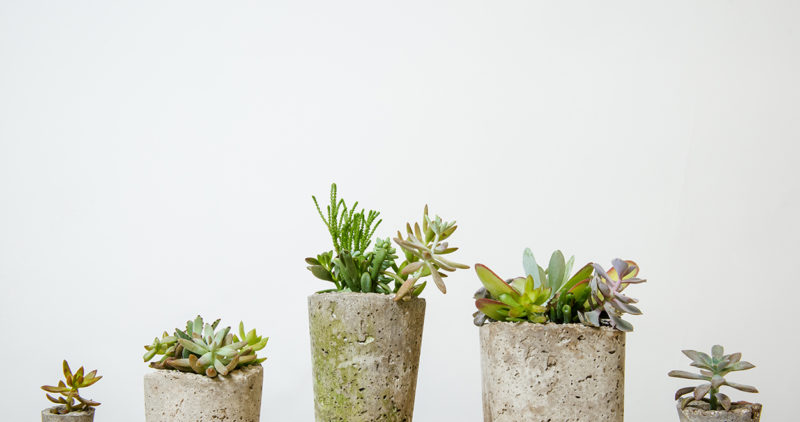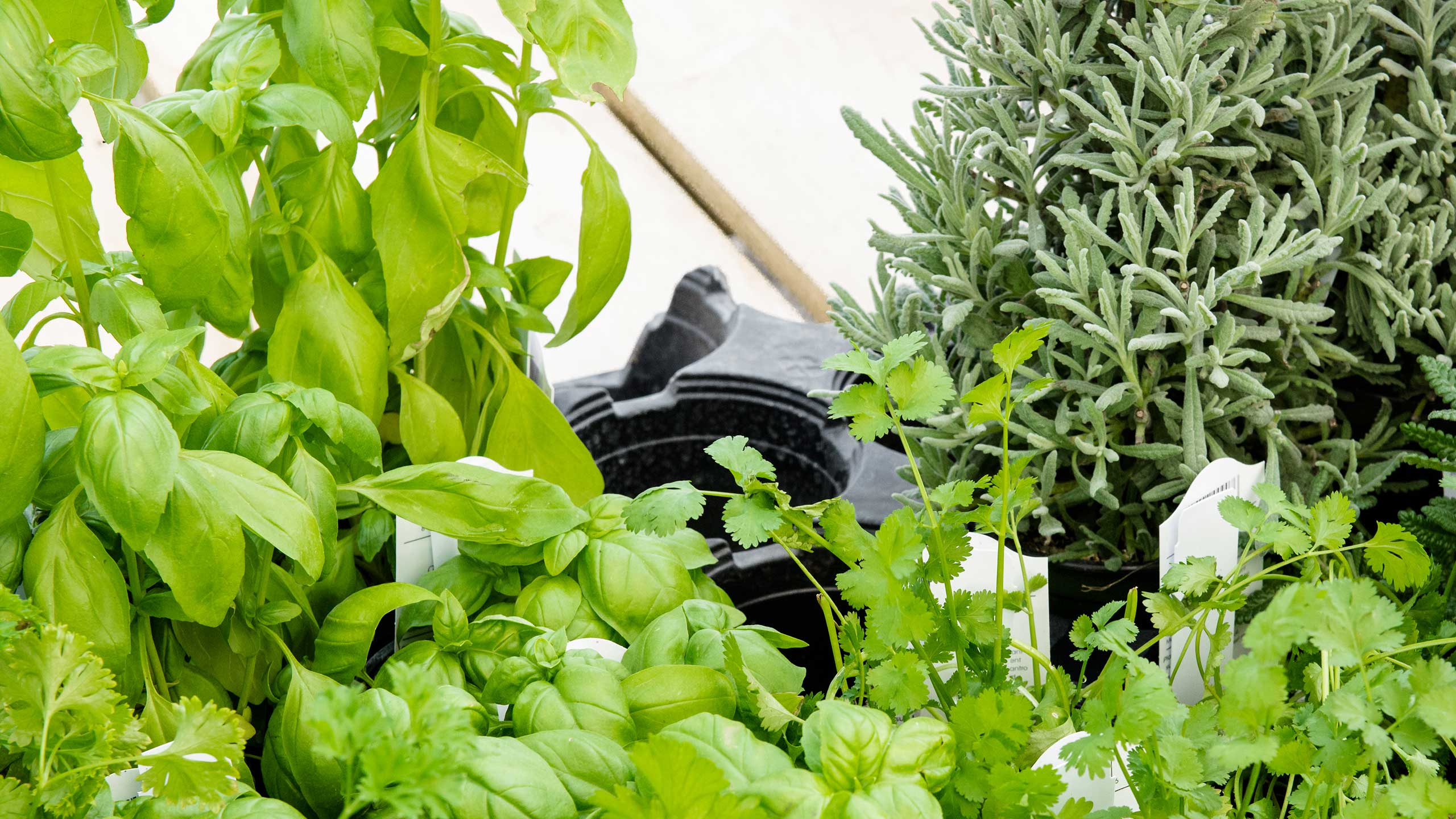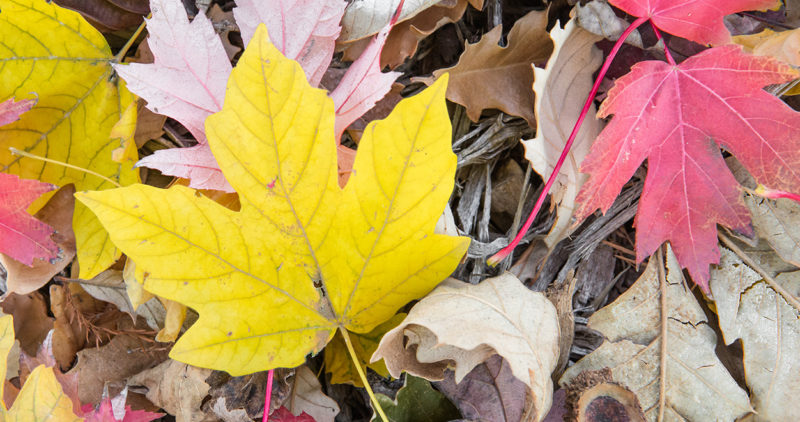
Fresh herbs give our favorite recipes those full flavors and aromas that the dried versions simply cannot, and one of the great things about summer is the variety of culinary herbs we can grow right out on the patio. As cold weather arrives, it seems like our supply of delicious herbal goodness is about to disappear, but greenhouse team member Noel Olson says that’s not necessarily true. With a sunny window and a little care, we can continue to enjoy the amazing flavor of our favorite herbs through the cold time of the year.

Noel says that the keys to growing a thriving herb garden inside are providing enough light, regular fertilization, and proper watering. Favorite culinary herbs like oregano, mint, and thyme will do well close to a south or east window where they get a good amount of bright sun every day. Be sure to rotate the plants periodically to make sure light gets to all sides evenly. Basil, rosemary, and lavender also need a sunny window, but will do even better with supplemental light. A two-tube fluorescent shop fixture hung six to eight inches above the herbs and left on for at least fourteen hours a day will help keep them healthy and productive.
Regular fertilizer also keeps indoor herbs happy and green, but it’s not necessary to provide it at full strength during the winter. When using water-soluble fertilizers, Noel recommends fertilizing once a month at half the concentration listed on the package. You may also consider a slow-release fertilizer – one application can last up to six months. We have several fertilizers for use with indoor plants, including some organic options. Check with a member of our Plant Care team to find the one that works best for you and your plants.
Proper watering is also important for indoor herbs. On one hand, indoor herbs appreciate regular watering just as they do when they’re outside. One the other hand, lower indoor light levels mean the plants are using less water than they would be outdoors, and overwatering can lead to root rot and fungal diseases. Finding a balance starts with a well-draining professional potting mix. These mixes retain the right amount of moisture in the soil while letting excess water drain away from the roots. Like most indoor plants, herbs need the top of the soil to dry out a bit before they’re thoroughly watered again. To keep the plant from sitting in excess water, dump out any extra that collects in the saucer after a few minutes.
In addition to light, fertilizer, and water, Noel has other great tips too – like turning on a fan for a few hours a week to keep the air moving a bit. Air circulation is important to keep fungal diseases like powdery mildew from infecting your garden – although you won’t want to have your fan pointed directly at the plants either. Keeping your plants from touching each other and trimming them periodically will also allow air to move freely around the foliage. Trimming encourage new growth too, which is tender and more flavorful than older foliage. (So, regularly using your herbs for cooking is beneficial to your plants as well as your taste buds.) If your herb plant seems to be declining despite proper light, water, and nutrition, check the drain holes for emerging roots, a sign the plant is becoming root-bound. Although she doesn’t recommend repotting until spring arrives, Noel suggests gently removing a root-bound plant from its pot and trimming a half inch or so off the bottom of the root ball. Add a little new potting mix to the container, replace the plant, and give it water to help it settle in again.
Whether you’re bringing established herbs in from the outdoors or you’re enjoying brand new plants from the selection of favorite culinary herbs we keep all season in the greenhouse, an indoor herb garden is a great way to enjoy beautiful flavors and added nutrition any time of the year. If you have any questions about growing indoor herbs and using them in the kitchen, just ask the team in the greenhouse. We have a great brochure with more care tips on specific types of herbs too.


